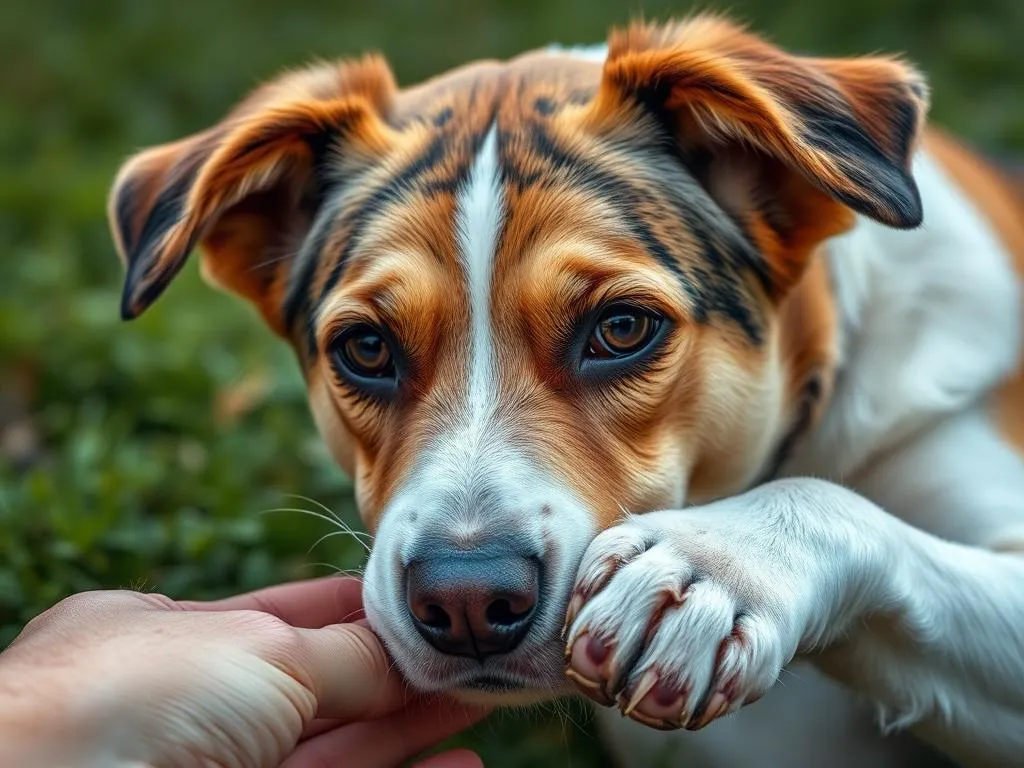
Introduction
As a dog owner, you may have noticed that your furry friend tends to recoil when you try to touch their paws. This behavior can be perplexing, leading many to wonder, why do dogs not like their paws touched? Understanding dog behavior is crucial not just for fostering a loving relationship with our pets but also for ensuring their well-being.
Many misconceptions surround a dog’s sensitivity to having their paws handled. Some believe that dogs are simply being obstinate, while others think all dogs inherently dislike paw touch. This article aims to explore the reasons behind this behavior, debunk common myths, and offer insights on how to approach paw handling in a way that respects your dog’s comfort and fosters trust.
Understanding Dog Behavior
Basic Canine Psychology
To understand why do dogs not like their paws touched, it’s essential to delve into basic canine psychology. Dogs experience the world primarily through their senses, particularly smell and touch. Their paws are equipped with sensory receptors that enable them to navigate their environment, detect temperature changes, and sense textures. Consequently, how they perceive touch—especially on their paws—can significantly impact their comfort levels.
Sensitivity in Dogs
Dogs possess a heightened sense of touch compared to humans. While we may consider our hands sensitive, a dog’s paws are even more attuned to physical sensations. This increased sensitivity can make certain types of touch, especially unexpected ones, feel intrusive or uncomfortable for them.
Reasons Dogs Dislike Paw Touching
Evolutionary Perspective
From an evolutionary standpoint, dogs have inherited instincts from their wild ancestors. In nature, a dog’s paws serve crucial roles in survival—whether it’s for hunting, digging, or defending themselves. To this end, their paws are vital tools. Touching their paws can disrupt the sense of security they derive from their instinctive behaviors, leading them to resist handling.
Physical Discomfort or Pain
Another significant reason for your dog’s aversion to paw touching could be physical discomfort or pain. Common issues like injuries, cuts, or arthritis can make touch painful. If your dog flinches or pulls away when you attempt to touch their paws, it’s essential to consider that they might be experiencing discomfort. Regular veterinary check-ups are crucial to identify any underlying health issues that may contribute to this behavior.
Lack of Familiarity
Dogs that haven’t been socialized to accept paw handling from a young age may be more resistant to it as adults. Early socialization plays a vital role in shaping a dog’s comfort level with various types of interactions. If a dog has not been accustomed to having their paws touched or handled, they may find it unfamiliar and potentially threatening.
Common Misconceptions
Dogs Are Just Being Difficult
One of the most prevalent myths is that dogs are simply being stubborn or difficult when they resist having their paws touched. This perspective fails to recognize that dogs communicate discomfort through body language and behaviors, which are often misinterpreted. Understanding that your dog’s reluctance is rooted in instinct or discomfort can help you adopt a more empathetic approach.
All Dogs Hate Their Paws Touched
Another misconception is that all dogs inherently dislike having their paws touched. Just like humans, dogs have individual personalities and comfort levels. Some breeds or individual dogs may be more accepting of paw handling than others, influenced by their upbringing, socialization, and past experiences.
How to Approach Paw Touching
Building Trust and Comfort
To address the issue of why do dogs not like their paws touched, it’s crucial to build trust and comfort. Gradual desensitization techniques can be incredibly effective. Start by gently touching your dog’s legs or the area around their paws without directly handling their paws. Praise and reward your dog with treats when they remain calm during this process.
Signs of Discomfort
Recognizing signs of discomfort is essential. Dogs communicate their feelings through body language, such as tensing up, pulling away, or vocalizing. If you observe these signs, it’s important to stop and reassess your approach. Pay attention to cues like lip licking, yawning, or looking away, as they can indicate stress.
When to Seek Professional Help
If your dog consistently resists paw handling and displays signs of aggression, it may be time to seek professional help. A certified dog trainer or behaviorist can offer tailored strategies to address this issue. Additionally, consulting a veterinarian is crucial if you suspect any underlying physical problems.
Grooming and Paw Care Tips
Importance of Regular Grooming
Regular grooming is vital for your dog’s health and well-being. Not only does it help maintain a clean coat, but it also allows you to inspect their paws for any signs of injury or irritation. Incorporating paw care into your grooming routine can help your dog become more accustomed to having their paws touched.
Safe Techniques for Touching Paws
When handling your dog’s paws, it’s essential to approach it gently. Here’s a step-by-step guide to ensure a positive experience:
- Start Slowly: Begin by simply placing your hand near their paws without touching them.
- Introduce Gentle Touch: Once your dog is comfortable, lightly stroke the top of their paw before attempting to hold it.
- Use Positive Reinforcement: Reward your dog with treats and praise as they become more comfortable.
- Keep Sessions Short: To avoid overwhelming your dog, keep initial sessions brief and gradually increase the duration as they become more accustomed to the handling.
- Use Appropriate Tools: Invest in grooming tools designed for dogs, such as nail clippers and brushes, which can make the experience more comfortable for your dog.
By following these steps, you can help your dog develop a more positive association with having their paws touched.
Conclusion
In summary, understanding why do dogs not like their paws touched is essential for nurturing a trusting relationship with your pet. Factors such as evolutionary instincts, physical discomfort, and lack of familiarity all contribute to this behavior. By recognizing these aspects and approaching paw handling with care and patience, you can help your dog feel safe and secure.
Remember, every dog is unique, and it’s essential to respect their individual preferences. The key to a happy and healthy relationship with your dog lies in understanding their needs and responding to their cues.
FAQs
Is it normal for dogs to dislike having their paws touched?
Yes, it is common for many dogs to feel uncomfortable with their paws being touched due to sensitivity, past experiences, or discomfort.
What should I do if my dog bites when I try to touch its paws?
If your dog shows aggressive behavior when you attempt to touch its paws, stop immediately and seek professional help from a trainer or behaviorist.
Are certain breeds more sensitive about their paws than others?
Yes, individual sensitivity can vary significantly among breeds. Some breeds may naturally be more tolerant, while others may have heightened sensitivity.
How can I help my dog get used to paw handling?
Gradual desensitization, positive reinforcement, and consistent grooming practices can help your dog become more comfortable with paw handling.
Can touching my dog’s paws cause pain or injury?
Yes, if your dog has an underlying health issue, touching their paws may cause discomfort. Always consult a veterinarian if you suspect any injury or pain.
By fostering an environment of trust and understanding, you can help your dog feel more comfortable with paw handling and strengthen your bond.









